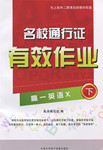题目内容
【题目】Sixteen years ago I learned this lesson. And I learned it in the back of a New York City taxi cab. Here’s what happened.
I got in a taxi, and we took off for Grand Central Station. We were driving in the right lane (车道) when all of a sudden, a black car jumped out of a parking space right in front of us. My taxi driver used his brakes (车闸), the tires made a loud noise, and at the very last moment our car stopped just one inch (英寸) from the back of the other car.
I couldn’t believe it. But then I couldn’t believe what happened next. The driver of the other car, the guy who almost caused a big accident, turned his head around and he started yelling bad words at us. I couldn’t believe it!
And this is when my taxi driver told me what I now call: “The Law of the Garbage Truck (垃圾车).” He said: But then here’s what really blew me away. My taxi driver just smiled and waved at the guy. So, I said: “Why did you just do that? This guy could have killed us!
“Many people are like garbage trucks. They run around full of garbage, full of frustration, full of anger, and
full of disappointment. As their garbage piles up, they look for a place to dump (倾倒) it. And if you let them, they’ll dump it on you.“So one day when someone wants to dump on you, don’t take it personally. Just smile, wave, wish them well, and move on. Believe me. You’ll be happier.”
So I started thinking, how often do I let Garbage Trucks run right over me? And how often do I take their garbage and spread it to other people at work, at home, or on the street? It was then that I said: “I don’t want their garbage and I’m not going to spread it anymore.”
I began to see Garbage Trucks. I see the load people are carrying. I see them coming to dump it. And like my taxi driver, I don’t take it personally. I just smile, wave, wish them well, and I move on.
【1】What happened to the author on his way to Grand Central Station?
A. He was caught in a traffic jam.
B. He had a fight with his taxi driver.
C. His taxi almost ran into another car.
D. His taxi suddenly got a flat tire (爆胎).
【2】When the author saw his taxi driver smile and wave at the driver of the black car, he _____.
A. was deeply impressed
B. got very angry
C. felt quite disappointed
D. complimented him on his good manners
【3】What can we infer from Paragraph 6?
A.The author used to have a lot of garbage trucks.
B.The author used to be a good manager.
C.The author used to have a lot of money.
D. The author used to complain a lot.
【4】How did the author learn to deal with Garbage Trucks?
A. Fight back immediately.
B. Smile and move on.
C. Call the police for help.
D. Dump it on someone else
【答案】
【1】C
【2】A
【3】D
【4】B
【解析】
试题分析: 文章讲的是发生在纽约出租车上的一件事。作者乘坐的出租车在行驶过程中,一辆停在路边的汽车突然开动,超到了出租车前面。这差点导致一起车祸,然而,出租车司机并未责怪汽车司机,反而以礼相待。作者从此事中认识到,不应该太在意他人的抱怨和不满,做好自己的事情。
【1】C细节理解题。根据第二段 “My taxi driver slammed on his brakes, skidded, and missed the other car’s back end by just inches!”可知,作者乘坐的出租车紧急刹车、滑行,最后与一辆汽车尾部“擦身而过”,差一点就撞上了。故选C。
【2】A推理判断题。根据“And this is when my taxi driver told me what I now call:”可知,作者对司机的话印象深刻。故选A。
【3】D细节理解题。根据第六段“And how often do I take their garbage and spread it to other people at work, at home, or on the streets?”” 可知,作者以前经常在工作上、在家中或大街上抱怨或发脾气,故选D。
【4】B推理判断题。根据最后一段 “I just smile, wave, wish them well, and I move on.”可知,作者学会了微笑面对别人的抱怨。故选B。

 名校通行证有效作业系列答案
名校通行证有效作业系列答案